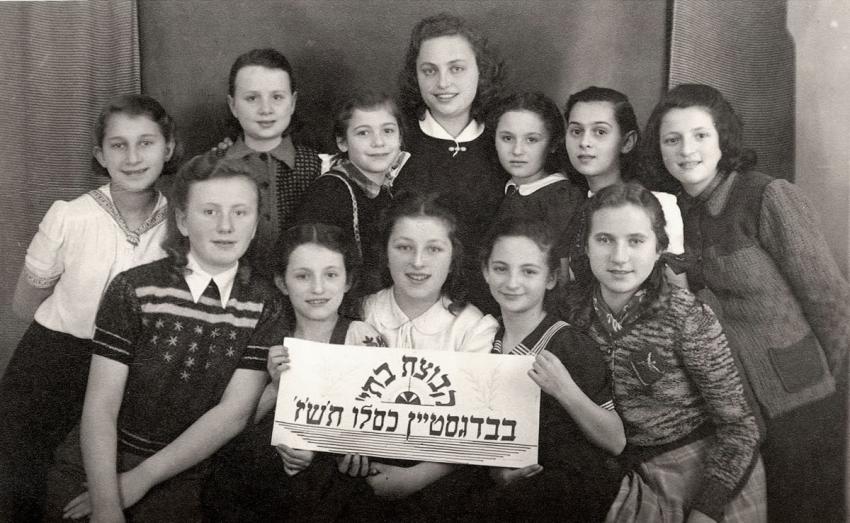The Jews in Bad Gastein had a rich cultural and social life in the camp. Many were members of Zionist youth movements and parties. They established schools and ran professional training centers to help the DPs acquire skills that would help them integrate in the countries they hoped to immigrate to. Many aspired to reach Eretz Israel (Mandatory Palestine).
After the Holocaust, some 250,000 Jews flocked to DP camps in Germay, Austria and Italy, and developed a culture all their own. More than 70 newspapers were published, commemoration projects were initiated, and even theaters and orchestras were established. People married, had children and planned the beginning of their new lives outside of Europe.
Emissaries of Jewish youth movements and agricultural settlement organizations, a group of Jewish teachers from Eretz Israel, and a Jewish Agency delegation came to help run the camps and train the DPs for life in Eretz Israel. They helped set up a school system, and taught the DPs how to farm in preparation for the agricultural life in kibbutzim in Eretz Israel.
Before and after World War II, the town of Bad Gastein in Austria was a popular holiday resort. After World War II, some 500 Jews lived in the DP camp in Ebensee, 140 km north of Bad Gastein. The Jews were a minority in the Ebensee camp. Most of the DPs there were Poles, who had been forced laborers and POWs during the war, and were now waiting to return home. The camp leadership was made up to Polish citizens, only one of whom was Jewish. Tensions flared between the Jews and the Poles in the camp. The Jews complained that they were being discriminated against by the camp director. It was decided that the Jewish DPs at Ebensee should be transferred to Bad Gastein. There the Jews were members of the managing committee of the camp. They established and maintained a primary school, high school, synagogue, and university which provided intensive training courses for adults and youngsters, to help them make a living in the future. The students learned tailoring, hat making, hairdressing, photography, shoemaking and carpentry, amongst other things. The DPs also had a rich cultural and social life that included a theater troupe, a choir and even a football team that played against teams from other DP camps. Many of the Jews in Bad Gastein were members of Zionist youth movements and parties, and there was also an educational group from the "Beit Yaakov" ultra-orthodox educational network affiliated with Agudat Israel.
The photograph, taken in December 1946 in Bad Gastein, depicts the ultra-orthodox "Batia" group of girls.
Holocaust survivor Rose Labor was five years old when she came to Bad Gastein with her mother in 1945. In her memoirs, she writes:
These were happy memories. We were there for two years. There I discovered my love for mountains and snow, the beauty of all these things. The clean lines. The white of winter and the green of summer. Every family received a room… the room had a door, it was warm and we had plenty to eat…
The American soldiers would come down from their camp to see us, and would give us tins of sweetened milk, chocolate and chewing gum, and sometimes a little money. My mother was lucky: she was given some money because of "her sweet daughter", so that she could dress me. My mother learned to sew there, and she dressed me like a princess…
Teachers from Palestine were sent to teach us to read and write modern Hebrew, to participate in all the Jewish holidays, and to learn to enjoy life again.







